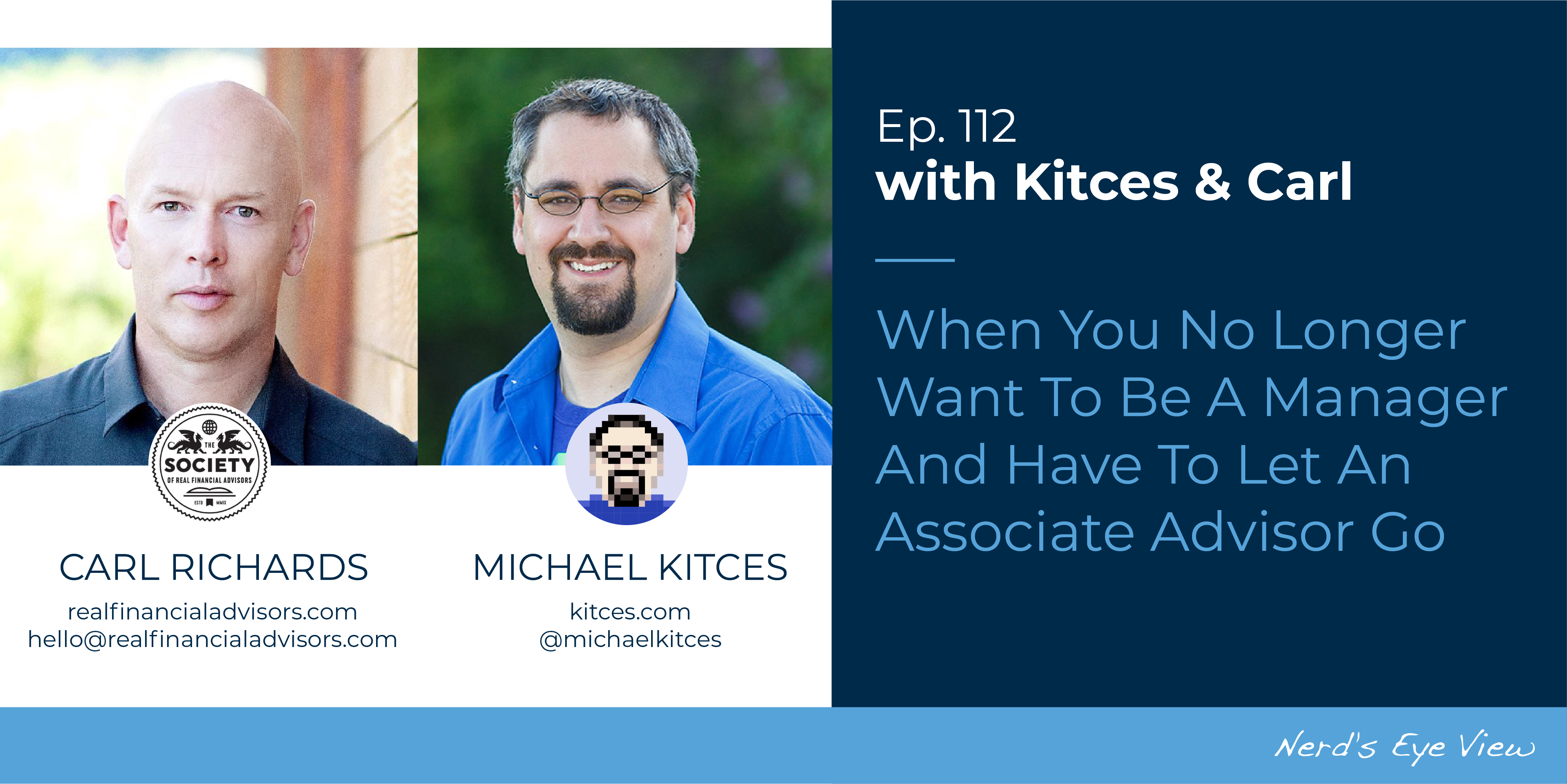As a solo advisory firm owner grows their practice, they may reach capacity constraints that prompt them to hire an additional employee. While this can be a logical step in scaling their firm, some advisory firm owners may not anticipate the managerial challenges that come with hiring additional staff. And even though some firm owners may have originally thought they were ready to expand and take on an employee, they may later determine that they actually prefer operating on their own as a solo without support… leading to the inevitable task of letting go of the person they hired in the first place.
In our 112th episode of Kitces & Carl, Michael Kitces and client communication expert Carl Richards discuss best practices for gracefully letting an employee go when the advisory firm owner decides they no longer want to grow into a business but would rather revert to being a solo advisor instead.
Letting go of an employee, especially when the reasons are not related to performance issues, can be an uncomfortable experience for all parties involved. While the firm owner may feel guilty and worry about how much the decision will impact the employee and their family, it is important for the owner to put aside their own feelings and instead focus on approaching the situation with objectivity, directness, grace, and compassion. Being clear and direct will help the firm owner communicate why they are terminating the associate advisor, and instead of trying to express remorse or regret (which can lead to confusion, anger, and/or resentment, making the situation more difficult for everyone), the advisor can instead act with compassion by making an offer of severance pay (depending on how long the employee served the firm), providing a recommendation letter or serving as a reference, or even making a referral to other advisory firms that may be looking to hire additional staff.
While contemplating the decision to terminate an associate advisor, an important consideration to make includes the past growth of the firm’s client base, especially since hiring the associate advisor. Because once they are no longer supporting the firm owner, capacity constraints will change, which means the owner may also have to downsize the number of clients to maintain a sustainable practice. And if downsizing clients offers a beneficial capacity lift for the owner, the owner might also consider offering the associate advisor an opportunity to buy the book of clients they no longer wish to serve, possibly helping them either launch their own firm or ease their transition so they can bring revenue with them to their next firm position.
Ultimately, the key point is that it is generally in everyone’s best interest for the firm owner to be clear and direct when the decision has been made to let someone go. And while the discussion will probably be difficult and uncomfortable, delivering the information with clarity, directness, and grace will make the news easier for the employee to understand and accept, and can also relieve the firm owner from the burden of having the sensitive conversation more quickly. And offering transitional tools like severance pay, a recommendation, and/or a referral to another firm can add compassion to the process, ultimately leading to an easier process of moving on for both the employee and the owner!


